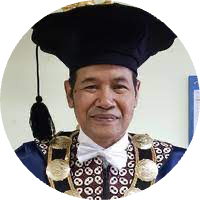MODIFICATION OF POCUNG SONG IN ETHNOMATHEMATICS-BASED LEARNING FOR THE TOPICS OF LENGTH MEASUREMENTS
DOI:
https://doi.org/10.21831/ej.v4i2.59965Keywords:
unit of length, macapat song, ethnomathematicsAbstract
References
Anto, P., & Anita, T. (2019). Tembang Macapat sebagai penunjang pendidikan karakter [Macapat Songs as supporters of character education]. Deiksis, 11(01), 77-85. http://dx.doi.org/10.30998/deiksis.v11i01.3221
Bonner, E. P. (2010). Promoting culturally responsive teaching through action research in a mathematics methods course. Journal of Mathematics and Culture, 5(2), 16-30.
Dahlan, J. A., Permatasari, R. (2018). Development of instructional materials based on ethnomathematic in mathematics learning in Junior High School. JNPM (Jurnal Nasional Pendidikan Matematika, 2(1), 133-150. http://dx.doi.org/10.33603/jnpm.v2i1.987
Danoebroto, S. (2020). Kaitan antara etnomatematika dan matematika sekolah: Sebuah kajian konseptual [Relation between Ethnomathematics and School Mathematics: A Conceptual Study]. Idealmathedu: Indonesian Digital Journal of Mathematics and Education, 7(1), 37-48. https://doi.org/10.53717/idealmathedu.v7i1.171
Fajriyah, E. (2018, February). Peran etnomatematika terkait konsep matematika dalam mendukung literasi [Roles of ethnomathematics in relation to mathematical concepts in supprting literacy] [Paper presentation]. In PRISMA, Prosiding Seminar Nasional Matematika. https://journal.unnes.ac.id/sju/index.php/prisma/article/view/19589
Matang, R. A. (2006, February). Linking ethnomathematics, situated cognition, social constructivism and mathematics education: An example from Papua New Guinea. In ICME-3 Conference Paper (pp. 135-150).
Massarwe, K., Verner, I., & Bshouty, D. (2010). An ethnomathematics exercise in analyzing and constructing ornaments in geometry class. Journal of Mathematics and Culture, 5(1), 1–20.
Permana, W. H. (2019). Etnomatematika: Aplikasi bangun datar dan peluang pada permainan tradisional kebudayaan Korea Selatan [Ethnomathematics: application of flat shape and its probibility in the South Korean traditional cultural games]. Jurnal Pendidikan dan Pembelajaran Terpadu (JPPT), 1(2), 138-150. https://doi.org/10.32696/pgsd.v1i2.360
Putra, M. (2018). How ethnomathematics can bridge informal and formal mathematics in mathematics learning process at school: A framework. For the Learning of Mathematics, 38(3), 11–14.
Rafiepour, A., & Moradalizadeh, A. (2022). Using mathematical ideas from carpet and carpet-weavers as a context for designing mathematics tasks. Journal on Mathematics Education, 13(3), 383–392. https://doi.org/10.22342/jme.v13i3.pp383-392
Rahmadani, A. (2019). Keefektifan model pembelajaran kooperatif tipe TGT (Team Games Tournament) type on the topic simple fraction for 3rd grade of Tanjungsari 1 state elementary school, Sidoarjo]. Trapsila: Jurnal Pendidikan Dasar, 1(01), 55–71. https://doi.org/10.30742/TPD.V1I01.724
Riyani, B. M., Fuadiah, N. F., & Murjainah. (2022). Desain didaktis materi pengukuran satuan panjang kelas IV sekolah dasar [Didactic design for measurements of length units for grade IV of elementary school]. INNOVATIVE: Journal of Social Science Research, 2(1), 252–261. https://doi.org/10.31004/INNOVATIVE.V2I1.3388
Rosa, M., & Orey, D. (2011). Ethnomathematics: the cultural aspects of mathematics. Revista Latinoamericana de Etnomatemática: Perspectivas Socioculturales de La Educación Matemática, 4(2), 32-54.
Saragih, H. A., & Ain, S. Q. (2022). Analisis kesulitan belajar matematika pada materi KPK dan FPB siswa kelas IV SD negeri 48 pekanbaru [Analyses of difficulties in mathematics learning in the KPK and FPB materials of students of class IV of state elementary school 48, Pekanbaru]. IJoIS: Indonesian Journal of Islamic Studies, 3(1), 27–35. https://doi.org/10.5281/ZENODO.6461719
Sugiyono. (2020). Metode penelitian kuantitatif, kualitatif, dan R&D [Methods for quantitative, qualitative, and R & D research]. Edisi ke-2 [2nd Edition]. Alfabeta. Bandung.
Zeichner, K. (1996). Educating teachers to close the achievement gap: Issues of pedagogy, knowledge, and teacher preparation. In Williams, B. (Ed.), Closing the achievement gap: A vision to guide change in beliefs and practice (pp.55-77). Alexandria, VA: Association for Supervision and Curriculum Development.
Downloads
Published
How to Cite
Issue
Section
Citation Check
License
The authors submitting a manuscript to this journal agree that, if accepted for publication, copyright publishing of the submission shall be assigned to Ethnomathematics Journal. However, even though the journal asks for a copyright transfer, the authors retain (or are granted back) significant scholarly rights.

Ethnomathematics Journal by https://journal.uny.ac.id/index.php/ethnomath is licensed under a Creative Commons Attribution-ShareAlike 4.0 International License.












